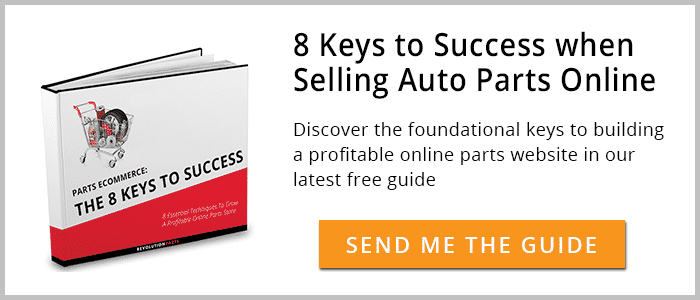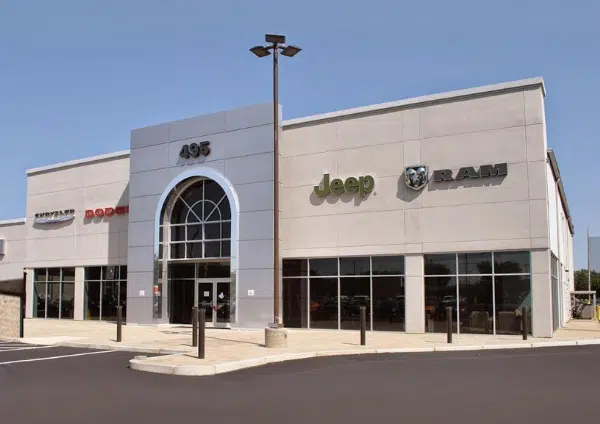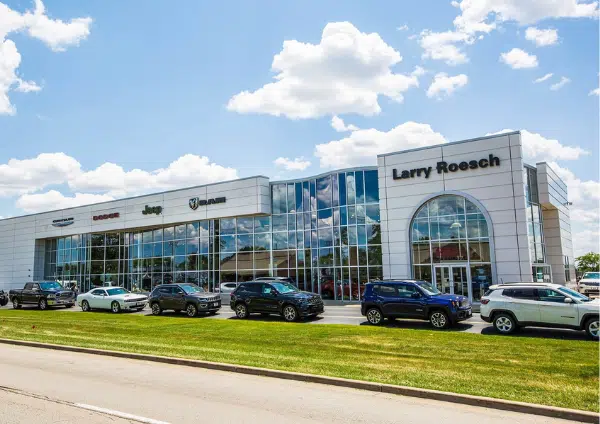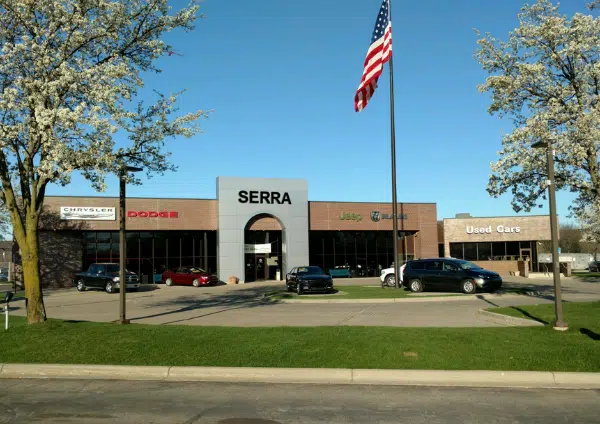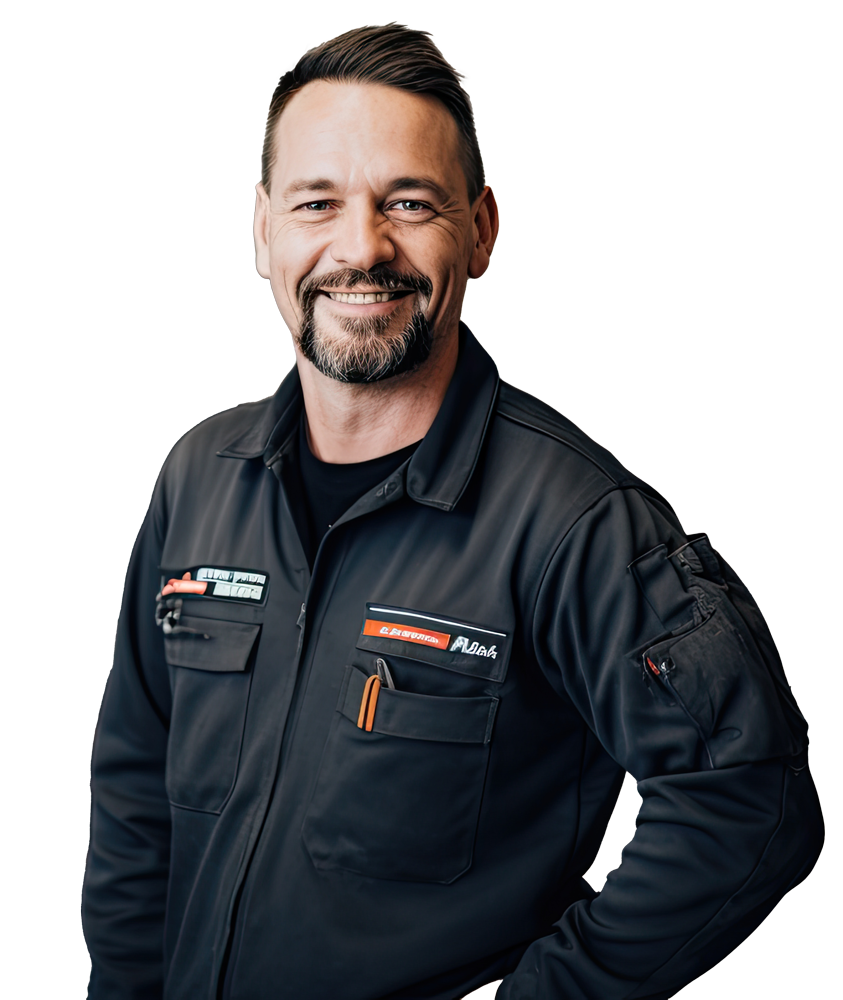Your website is running, your holiday sales are amazing, you’re ready to start reaching out to customers… but they’re nowhere to be found!
Investing in some manner of marketing is always a good idea, but there are things you can do to improve your parts website traffic without spending a cent.
With a few tweaks to your parts site, you can be a highly-ranked site that your customers will see first when looking to buy. It’s called SEO (search engine optimization), and if your parts website focuses on SEO, you’re much more likely to make parts sales.
Google’s algorithm for high rankings is constantly shifting, so there’s no set-in-stone way to reach the #1 spot.
But here’s the trick: Google cares about high-quality, authoritative content, so a lot of SEO is based around that idea. It’s still a good idea to invest in more than one type of marketing, but SEO remains one of the best ways to gain traction online.
There’s still some work involved, so it’s not something you can knock out in an hour or two. But it’s worth your time. Here are the steps you can take to convince Google that your website is worthwhile:
Original Content
Content is key when it comes to organic search results. Keyword-rich chunks of text can go a long way in showing Google that you run a high-quality website.
For the best results, you should write content in several different places on your parts website. This gives your site an overall more authoritative look in Google’s standards.
You can outsource these writing tasks to a freelancer or marketing agency if you’re too busy to write it all yourself. Just make sure to read over their work for accuracy. You know your parts business and what you’re selling better than an agency!
1. About Us Page
Believe it or not, Google specifically at the About Us page when it comes to SEO.
Even if it didn’t affect SEO, you’d benefit from a well-written About Us page for the sake of building trust with your online customers. Show your shoppers that you’re a team of real people behind the website!
Don’t just write a sentence or two about how you sell auto parts online. Go into more detail. Talk about what your company stands for and why customers should buy from you. Do you offer the best customer service? Unbeatable prices? Fast shipping?
Include pictures of your parts team and dealership. Images can have a direct effect on your SEO, as long as they’re high quality and relevant.
Local Content
If your parts website is associated with your dealership, then talking about your service to the local area can give the page another SEO boost. Specifically mention the area where you serve customers and the benefits of local purchases, such as faster delivery and local pickup options.
2. Parts Descriptions
You can find a lot of success with something as straightforward as writing parts descriptions.
Pick a popular category or product (such as brake pads or filters) and type up a quick description of what it does, how customers can know when it’s time to replace, and why they should always buy OEM.
Start with descriptions of your top-selling parts. If there are fewer than 50 monthly searches for a type of auto part, then it’s not worth your time to write a description for it. Focus on keywords that get over 50 hits a month.
In order to work, make sure these parts descriptions are at least 200 words, although a word count of 300-500 will be more effective. You can also embed links here to related parts, which helps your SEO even more.
3. Running a Blog
A blog is worth its weight in gold, even if you only post once or twice a month. Focus your content on subjects that DIYers and car enthusiasts would like to read. If you can get blog subscribers, the benefit increases tenfold, since you can send out promotional emails about sales and specials going on at your parts website.
You can write about:
- Industry news
- Installation guides
- Reviews on vehicles and parts
- Tips and tricks
Google is especially fond of data-driven articles or articles with great storytelling. A powerful headline is arguably the most important part, since it can drive customer clicks and improve your ranking through the “vote” of the people who click your article.
4. Unique store policies
When you first launch a parts website, it’s most likely pre-filled with default shipping, return, and cancellation policies.
Meaning your site and many others have the exact same duplicate content for these store policies! (Remember: Google can actually penalize you for having the same content as another website!)
Customize the policies to fit your store and tweak some of the wording where possible. Even small changes will distinguish your policies from other stores!
5. Embedding Links
A healthy number of links can improve your authority in the eyes of Google.
We want to emphasize the word “healthy” in that sentence, since posting too many links will actually hurt your Google rankings. Links need to be natural and helpful, not just placed around for the sake of boosting SEO.
Embedding links in any of the above content areas (blog, parts descriptions, About Us page) will help increase your Google SEO rank.
The strongest links connect both ways. This means that you link to another website, and that website links back.
Here are some ways to get other websites to link to your parts website:
- Guest blog posts
- Putting together a list of affiliate companies
- Writing testimonials for other companies you work with
- Donating to charity — Not only will it improve your reputation among customers, but often charities list benefactors on their website.
Keep an eye out for webpages that mention your business with a tool like Google Alerts, so you can link back and make the connection stronger.
The Easiest Link that Most Dealerships Miss
It’s surprising how many parts managers forget about one of the easiest links you can connect from: the dealership website. Adding a link from your dealership website to your parts website has so many benefits and can give your parts website a major boost.
We strongly recommend creating that link! It will definitely pay off.
Other Factors
Content is a major factor in raising your website’s SEO, but it’s not the sole contributor. Unfortunately, the other ranking factors are harder for you to control. Often it depends on the structural build of your website, which changes depending on your eCommerce provider.
If your eCommerce solution isn’t up to snuff, then it’s hurting your Google ranking and perhaps it’s time to consider changing platforms.
6. Mobile-friendly Design
More people than ever are using smartphones to browse the internet. So it makes sense that Google has made a fairly recent change to have this affect a website’s SEO.
Websites that are easy and intuitive for mobile users are more likely to rank higher. Sometimes this is called a “mobile-friendly” layout, but technically the term is a “responsive” website design that is optimized for navigating on smartphones and tablets.
Look up your parts website on a smart phone to see if this factor is hurting or helping your ranking.
7. Website Health
Website speed plays a role in Google rankings. Make sure you’re working with a solution provider who can ensure a quick-loading website. Website health can help convince Google that your content is worthwhile, which is why load screen is something to keep in mind.
Additionally, 40% of consumers will abandon a site if it takes more than 3 seconds to load, according to a study by Akamai. Not only will this hurt your conversion rates, but also reduce your traffic. Google likes to give special attention to websites that see a lot of visitors—not websites where shoppers give up after only a few seconds on the site.
Domain age can also hurt or help your Google ranking. If your domain has been in use for a while, Google sees it as a more reliable source. If your domain is brand new, don’t worry—it will improve over time as it ages.
After all, SEO and Google rankings takes time—you can’t reach the top spots in only a day.
Conclusion
Showing up higher in Google rankings can improve site traffic overall, so it’s worth the time and effort. Setting aside 20 minutes a week to boost your SEO is a perfect place to start. You can even hire a freelance writer or a marketing agency to do the work for you, as long as it gets done.
The majority of parts sites don’t bother investing the time to improve their SEO. This presents you a great opportunity that is ripe for the taking. Dominate the top spots with a worthwhile investment and your parts website traffic will see the difference!
